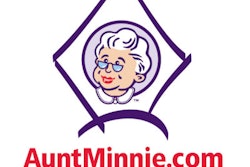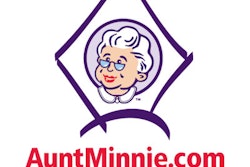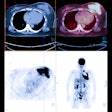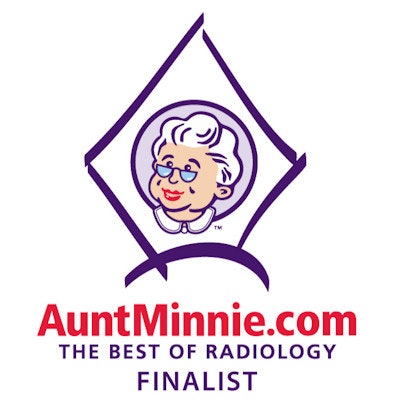
Are you curious about who made it to the final round in this year's edition of the Minnies, AuntMinnie.com's event recognizing excellence in radiology? This year's list of finalists shows how the COVID-19 pandemic has impacted medical imaging.
The Minnies finalists were drawn from more than 200 candidates across 15 categories. You can also view a full list of the candidates, based on nominations from our members.
In the next round of voting, our expert panel will vote on the finalists, with winners announced in late October.
Most Influential Radiology Researcher
Elizabeth Krupinski, PhD, Emory University
 Elizabeth Krupinski, PhD.
Elizabeth Krupinski, PhD.With a doctorate in experimental psychology, the research focus of Elizabeth Krupinski, PhD, has been on how humans perceive medical images, as well as the impact of this perception on their behavior and performance. Krupinski is a professor of medical imaging and vice chair for research at Emory University, which she joined in 2015 after 23 years at the University of Arizona.
A major emphasis of Krupinski's research has been on developing a better understanding of how clinicians interact with medical images. In particular, she has focused on how to best optimize how images are presented to physicians, both in the clinical realm and for training and education.
That focus is exemplified in some of the research studies she was involved with in 2020. A perfect example is her involvement in a study published March 2020 in the Journal of Medical Imaging that analyzed the effectiveness of special glasses that filter blue light for reducing symptoms of computer overuse.
In an editorial published March 24 in Radiology, Krupinski examined the challenges of patient privacy and rights to data that might be used for the development of artificial intelligence (AI) algorithms. She recommends the use of a framework developed by Larson and colleagues for using and sharing clinical imaging data.
Krupinski contributed an editorial to the March edition of the Journal of Medical Radiation Sciences that emphasized the importance of image optimization strategies that go beyond minimizing radiation dose. And she served as senior author on a study published September 2020 in Radiology that examined how the COVID-19 pandemic has affected the activities of academic researchers in radiology.
Among the awards and recognition Krupinski has received in the past year, she was named "outstanding researcher" by the RSNA in November 2019. In making the award, the RSNA noted Krupinski's work researching the impact of image manipulation on the performance of clinical observers, and her investigation of factors such as experience level and fatigue as issues that could affect the accuracy and efficiency of medical image interpretation.
What's more, she delivered the annual Dwyer Lecture at the Society for Imaging Informatics in Medicine (SIIM) 2020 meeting, focusing on the human impact of medical imaging informatics tools such as AI.
Dr. Pamela Woodard, Mallinckrodt Institute of Radiology
 Dr. Pamela Woodard.
Dr. Pamela Woodard.Dr. Pamela Woodard holds a number of research-related roles at Mallinckrodt Institute of Radiology at Washington University School of Medicine in St. Louis, where she has served as a diagnostic radiologist for the past 18 years. These include senior vice chair and division director of radiology research facilities, director of Mallinckrodt's Center for Clinical Imaging Research, and head of advanced cardiac imaging, which includes CT and MRI.
Most of her research work in 2020 focused on advanced imaging modalities, such as MRI techniques, and she also delved into clinical applications of 3D printing, serving as a senior author on several publications, such as a paper published August 20 in Academic Radiology on the cost savings of 3D models for orthopedic and maxillofacial surgery.
In MRI, she participated in research that examined the use of the modality to assess fetal membrane ruptures, published June 25 in Frontiers in Physiology, and another study published July 12 in the American Journal of Obstetrics and Gynecology that used MRI with a diffusion-tensor imaging protocol to examine cervical remodeling in early and late pregnancy.
As a senior author, her papers included a January study in Circulation: Cardiovascular Imaging that used PET/MRI with a copper-64 radiopharmaceutical to image hypoxia in atherosclerosis, as well as a May 15 paper in the Journal of Thoracic Imaging that described the use of the myocardial cut-off sign on CT and MRI scans to distinguish left ventricular pseudoaneurysms from true aneurysms.
In addition, she was senior author on a paper published June 20 in the Journal of Applied Clinical Medical Imaging Physics that examined the safety in the MRI environment of magnetic eyelashes worn by patients.
Most Effective Radiology Educator
Dr. Ruth Carlos, Journal of the American College of Radiology
 Dr. Ruth Carlos.
Dr. Ruth Carlos.Dr. Ruth Carlos is the immediate past president of the American Roentgen Ray Society (ARRS) and has been editor in chief of the Journal of the American College of Radiology since January 2019, when she took over from Dr. Bruce Hillman, JACR's founding editor.
A practicing radiologist and assistant chair for clinical research at the University of Michigan, Carlos has been active in educational, research, and leadership issues in radiology. She's been particularly active in digital media, starting JACR's Radiology Firing Line podcast and #JACR Twitter chat.
Carlos has more than 20 years of experience in radiology and medical journalism, has served as a reviewer for 10 scientific journal publications, and has authored over 130 peer-reviewed publications. She was a frequent contributor to JACR for 10 years before taking over from Hillman and becoming the journal's first female editor in chief.
In addition to her duties with JACR and ARRS, Carlos has led research as part of the American College of Radiology Imaging Network (ACRIN) on how radiologists can lead in the delivery of patient-centered healthcare. She has also participated in the development of clinical guidelines with the National Quality Forum and the Joint Commission.
Dr. Amy Patel, University of Missouri-Kansas City
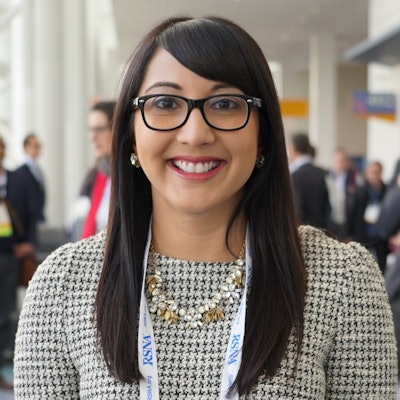 Dr. Amy Patel
Dr. Amy PatelDr. Amy Patel is the medical director of Liberty Hospital Women's Imaging and a clinical assistant professor at the University of Missouri-Kansas City.
But that's just her day job. If you've spent any time on radiology Twitter in the past few years, chances are you've run across one of her posts or a Twitter chat she's moderating. She is also associate editor of digital media for the Journal of the American College of Radiology.
Patel is particularly active on legislative issues regarding breast imaging -- for example, she helped get legislation passed in Missouri in 2018 that expanded insurance reimbursement in the state for 3D mammography, and in 2020 that expanded coverage for high-risk breast cancer patients in keeping with American College of Radiology recommendations.
Patel is very active in radiology education as well, particularly through Twitter chats on topics like virtual interviews for residents and fellows, as well as giving grand rounds presentations around the U.S. She's also active in the RADxx group, which seeks to promote women in imaging informatics and elevate them to leadership roles.
With all this going on, Patel has still found time to conduct clinical research, such as a study presented at the 2020 edition of the Society for Imaging Informatics in Medicine (SIIM) that found that AI breast ultrasound reduced image interpretation time by 49%.
Most Effective Radiologic Sciences Educator
Tobias Gilk, Gilk Radiology Consultants
 Tobias Gilk.
Tobias Gilk.A Minnies runner-up in this category in 2019, Tobias Gilk offers consulting to radiology practices and manufacturers on MRI safety and operation.
After 15 years practicing as an architect, with particular focus on integrating medical imaging devices into buildings, in 2014 he founded Gilk Radiology Consultants, which provides radiologist and staff training, procedure and best-practice guidance, and regulatory compliance reviews.
He has previously served as chair of the American Board of Magnetic Resonance Safety and is currently senior vice president of design at architecture firm Rad-Planning. Gilk is also a certified MR safety expert and MR safety officer.
In May of this year, Gilk was part of a team that crafted and published the American College of Radiology's updated manual on MR safety. He continues to expand his MRI knowledge through the pursuit of a doctorate in the prevention of accidents and injuries in MRI at the University of Missouri-Kansas City.
Dawn Moore, Emory University
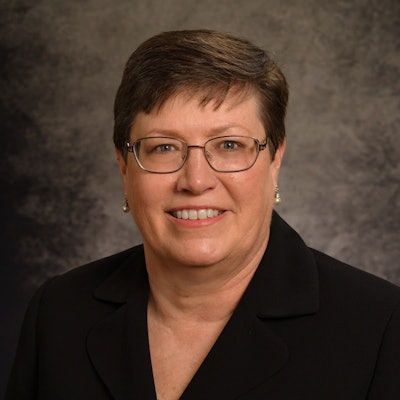 Dawn Moore.
Dawn Moore.Dawn Moore has been an instructor at Emory University for 34 years and has also served the university as a clinical coordinator and associate director for radiologic technology programs and as director of the medical imaging program.
Moore earned her Master of Medical Science degree in radiologic technology, radiography education, and health physics from Emory in 1984, and she has served as a mentor for the Association of Educators in Imaging and Radiologic Science and the American Society of Radiologic Technologists (ASRT).
Her teaching skill has been acknowledged many times: In 2006, she received the ASRT's Leadership Academy for Educators award; in 2008, the Atlanta Society of Radiologic Technologist's Terry McDowell Memorial Lecturer award; and just last year, she won Emory's School of Medicine Dean's Teaching Award.
Moore has taught more than 20 different courses for the university's Bachelor of Medical Science program in medical imaging and has delivered lectures on topics ranging from equipment operation and maintenance to radiation protection and biology at a variety of seminars and conferences.
Most Effective Radiology Administrator/Manager
Natasha Beyde, Montefiore Health System
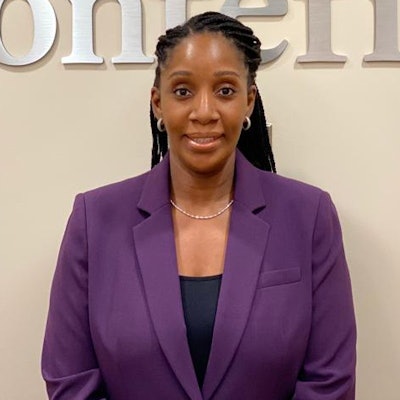 Natasha Beyde.
Natasha Beyde.Natasha Beyde was named assistant director of clinical imaging at Montefiore's Hutchinson campus in 2018, although she has served at Montefiore for almost two decades in a variety of capacities. Her roles have included chief technologist at the Wakefield Hospital campus, mammography supervisor and lead technologist at the breast imaging center, and radiologic technologist at the Montefiore Hospital Moses campus.
Beyde serves on a variety of committees at the Montefiore Medical Center in the Bronx, including its radiation safety group, its postpandemic COVID-19 task force, and its patient satisfaction team. In 2011, Beyde earned a master's degree in science organizational leadership. This past March, she received a Lean Six Sigma Green Belt certificate from the Florida Institute of Technology.
Greg Hill, Emory University
 Greg Hill.
Greg Hill.A Minnies runner-up in this category in 2019, Greg Hill since 2018 has served as executive administrator and vice chair of administration for the department of radiology and imaging sciences, as well as vice president of radiology for Emory Healthcare.
Hill came to Emory from the Medical College of Wisconsin, where he was lead department administrator for the department of radiology and the college's Center of Imaging Research; before Wisconsin, he was a professor of radiology at the University of Illinois College of Medicine.
Not only does Hill have academic experience, he also has practice experience: He filled a variety of roles at Central Illinois Radiological Associates in Peoria, including practice manager, chief operating officer, and CEO.





